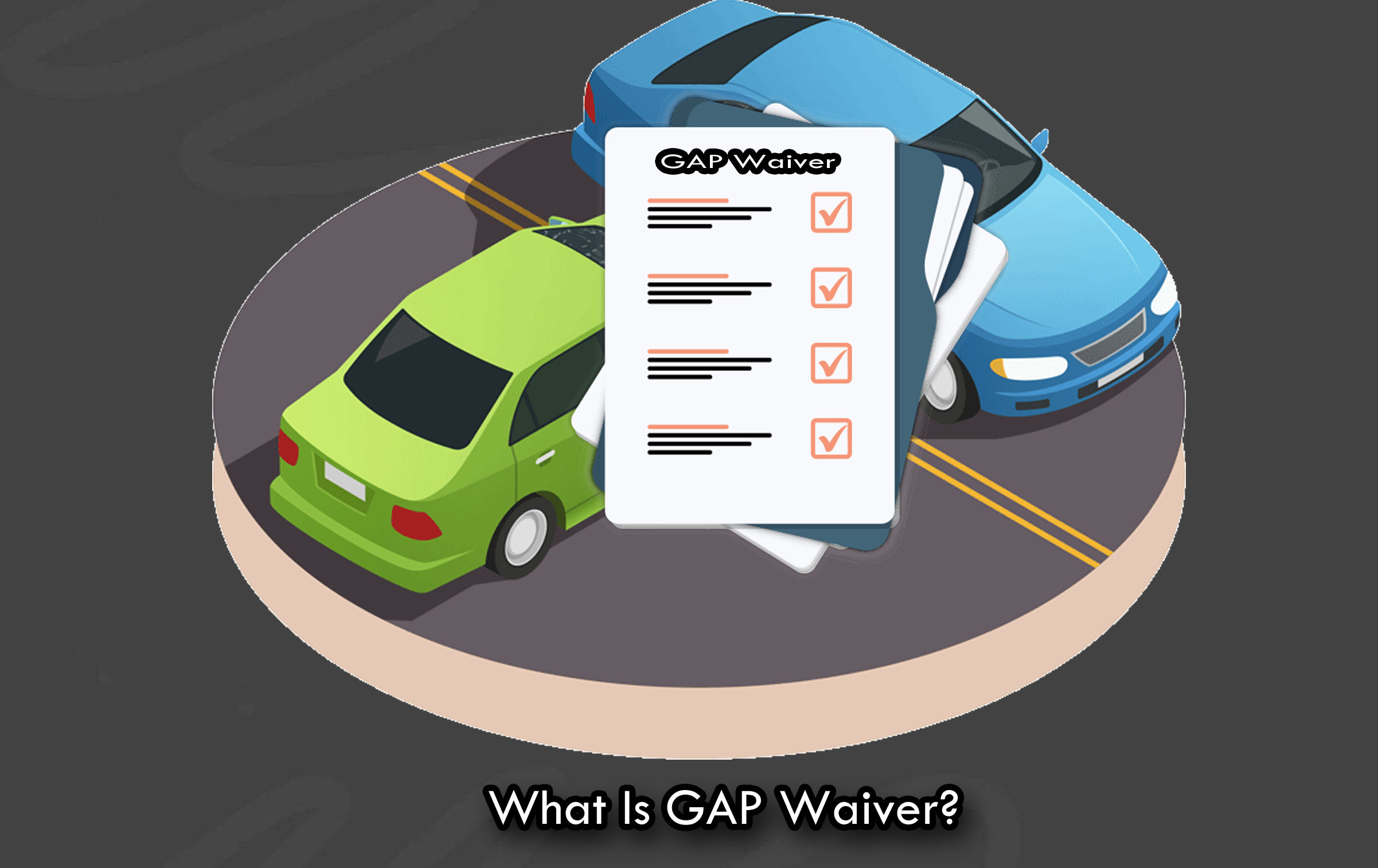
What is a GAP waiver? When financing a vehicle, many people don’t realize that the car’s value can drop faster than they pay down their loan.

This can lead to a ‘gap’ if the car is totaled or stolen, leaving them owing more than the car is worth. A GAP waiver steps in to cover this difference, offering peace of mind when the unexpected happens.
But what exactly is a GAP waiver, and how does it work? To put it simply, a GAP waiver, also known as Guaranteed Asset Protection, is an add-on to a car loan or lease.
And it helps cover the ‘gap’ between the amount owed on a vehicle and its actual cash value if the car is totaled or stolen.
Without a GAP waiver, drivers might be responsible for paying the difference out of pocket, which can be a financial burden, especially with how quickly new cars depreciate.
When you buy or lease a car, the car’s value starts depreciating the moment you drive it off the lot. If an accident or theft occurs early in the loan term, you could owe more than what the insurance company is willing to pay out, since insurance usually covers only the current market value of the car, not the original loan balance.
Here, we’ll dive into how a GAP waiver works, who might need it, and the benefits it can provide for car owners. Understanding these details can help you decide if a GAP waiver is a smart addition to your auto loan or lease.
How Does Gap Waiver Work?
A GAP waiver helps if your car is totaled or stolen and you owe more on it than what your insurance will pay.
When you finance or lease a car, it’s common for the car’s value to drop quickly. If an accident or theft happens, your insurance usually covers only the car’s current value.
And this might be less than the remaining loan or lease balance. This difference is called the “gap.”
With a GAP waiver, that gap is covered. For example, if your insurance pays $15,000 for a totaled car, but you still owe $18,000. The GAP waiver would cover the $3,000 difference. This way, you won’t be left paying for a car you no longer have.
You can usually buy GAP coverage from the dealership or lender when you get your car loan or lease. Some leases may even include it automatically.
However, GAP waivers don’t cover all expenses, like your insurance deductible or any missed payments on the loan. Their main purpose is to handle the difference between what your insurance pays and what you still owe.
What Does A GAP Waiver Cover?
A GAP waiver helps protect you financially if your car is stolen or declared a total loss after an accident. It covers the “gap” between the amount you still owe on your loan and what your auto insurance pays out, which can be less due to depreciation. GAP waivers generally cover:
- Remaining Loan Balance
- Total loss payouts
- Financed Add-Ons
- Unpaid Taxes or Fees
- Insurance Deductibles
This protection can be very helpful, especially for new cars that quickly lose value, as it prevents you from being stuck with a loan balance on a car you no longer own.
What Is Not Covered by GAP Waivers?
GAP waivers offer specific protection, but there are some costs they don’t cover:
- Past Due Loan Payments
- Maintenance Costs
- Insurance Premiums
- Traffic Tickets and Fines
- Excessive Loan Balances
- Interest After Car Loss
- Late Charges and Legal Fees
It’s best to review your policy closely to understand exactly what is and isn’t included to avoid surprises later.
What Is the Difference Between A GAP Waiver And GAP Insurance?
While both GAP waivers and GAP insurance cover similar situations, there are important differences:
GAP Waiver
This is generally included in a loan or lease agreement from a lender or dealership. If your car is totaled, the lender waives the amount left on your loan, covering the gap without asking you for the remainder.
GAP Insurance
This is a separate policy you can buy through your car insurance provider. Like a waiver, it covers the difference between the car’s current market value and what’s left on the loan. But you get it through an insurance provider instead of through the lender.
In both cases, the goal is to help you avoid paying off a loan for a car that you can’t use, but a GAP waiver is tied to the loan agreement, while GAP insurance is a standalone policy.
Which Should I Choose: GAP Waiver or GAP Insurance?
Choosing between a GAP waiver and GAP insurance can depend on your lender’s rules and your personal preferences.
- Some lenders requires it in the loan agreement, meaning it’s built into your loan terms.
- If the lender doesn’t require it, you can compare the costs of adding GAP insurance to your existing car insurance policy, which can sometimes be less expensive.
The decision often depends on the lender’s requirements and your own financial situation.
Bottom Line
A GAP waiver can be a valuable safety net if you have a car loan or lease. It helps cover what’s left on the loan if your car is totaled or stolen and insurance doesn’t cover the full amount. This coverage provides peace of mind and protects you from unexpected financial burdens after a serious car loss.
Many car insurance companies offer GAP coverage, so it’s worth comparing options to find the best deal. If you already have car insurance, ask your provider how much it would cost to add GAP insurance to your policy if a GAP waiver isn’t part of your loan.